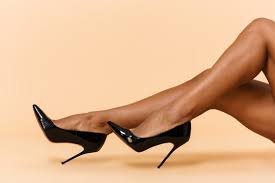Fashion
Fashionprenuers focus on rebuilding sector with digital solutions in post-COVID era
The disruption of the COVID-19 pandemic on global value chain and its impact on African businesses is already evident.
As factories close, the border closures and travel restrictions interrupt supply chains, the workers – the most vulnerable and lowest paid people in the fashion supply chain – have been left to feel the worst effects.
To tackle the issue, about 88 attendees last Thursday joined a webinar hosted by the African Development Bank’s Fashionomics Africa initiative in collaboration with the United Nations Environment Programme to find possible solutions.
The webinar among other things, focused on building more resilient value chains through innovative business models that would use renewable materials and recycle old clothes into new products.
The panel was composed of industry experts and creative minds behind sustainable African fashion brands.
It was to enable African entrepreneurs operating in the textile, apparel and accessories industry to create and grow their businesses, with a focus on women and youth.
Participants agreed that it was important to develop a healthy fashion industry in Africa to meet the needs of consumers while others suggested a strong collaboration among fashionpreneurs to help resolve challenges faced in the industry.
As part of the forum, digital experts were also seeking to develop applications to analyse the impact of the textile sector on climate change and environment to help deploy climate-friendly solutions in Africa.
Other contributors indicated that digital tools had become a phenomenon and had revolutionised the way the fashion industry worked, hence the need to educate designers and consumers in the fashion industry.
The Fashionomics Africa initiative intends to contribute to the African Textile, Apparel & Accessories industry by increasing the number of entrepreneurs in the sector, while helping them to access markets through e-commerce capabilities, and boosting their access to finance, as well as technical and business skills, among others.
Fashion
Evolution of Hair Extensions: Closures and Frontals

The hair and beauty industry has witnessed remarkable advancements over the years, with evolving trends that enhance both aesthetics and versatility.
One of the most significant transformations in hairstyling is the shift from traditional weave-on extensions to modern closures and frontals.


In the late 1990s, weave-ons were the preferred choice for women looking to add length and volume to their natural hair.
However, with contemporary innovations, closures and frontals have emerged as the new standard, providing a seamless, natural appearance while allowing for greater styling flexibility.
These hairpieces have become an essential part of hairstyling for various occasions, including weddings, parties, religious gatherings, and other social events.
Understanding Closures and Frontals serves the common purpose of enhancing hair volume and styling options while creating a natural-looking hairline.


They differ in structure, coverage, and styling versatility:
Frontals: A frontal is a hairpiece that extends from ear to ear, usually measuring 13 inches in width and 4 to 6 inches in depth.
It provides a full hairline and allows for diverse parting styles, offering the illusion of a completely natural hairline.
Frontals are typically sewn onto bundles or used to construct full wigs, allowing for maximum styling flexibility.
Closures: A closure is a smaller hairpiece, often measuring around 4×4 inches, and is placed at the crown or front section of the head. Unlike frontals, closures offer limited parting space, making them suitable for more defined and structured hairstyles.

However, closures are low-maintenance and provide a realistic finish that seamlessly blends with natural hair.
These innovative hairpieces offer a more seamless and natural look, elevating confidence and allowing for versatile styling options.
As the industry continues to evolve, closures and frontals remain a preferred choice for women seeking sophisticated, stylish, and convenient hair solutions.
By Georgina Boadiwaa Ntim
Fashion
Block Heels: Perfect blend of style, comfort, versatility

Footwear trends have evolved over the years, and one of the most practical yet stylish options for women is the block heel.
This versatile shoe blends elegance with comfort, making it a preferred choice for corporate settings, churches, and social gatherings.
Unlike stilettos, block heels offer stability, making them easy to walk in.
Corporate fashion
Traditionally, corporate fashion often included wedge heels or classic pumps.






However, the fashion landscape has shifted to embrace block heels as a stylish and practical alternative.
These heels provide a broader surface area, distributing body weight evenly and reducing strain on the feet.
As a result, many workplaces have accepted block heels as part of formal attire, allowing employees to wear them comfortably throughout the workday.
Versatility
Block heels are not limited to corporate settings. Many women pair them with their church outfits, showcasing various designs and colours.
Available in shades like pink, purple, blue, yellow, silver, gold, and black, these heels complement different looks, whether for a religious gathering, lectures, presentations, or parties. Top brands such as Pretty Little Thing, Walmart, Fashion Nova, Amazon, DSW, and Macy’s offer a wide range of block heels catering to different budgets.
Why Block Heels?
Compared to stilettos or kitten heels, block heels provide better balance, making them an ideal choice for beginners and experienced wearers alike.
Short block heels, in particular, are recommended for those new to wearing heels, as they offer comfort and ease of movement.
Tips for Walking in Block Heels
1. Practice regularly – Consistent practice will help improve your balance and confidence.
2. Step heel to toe – Walk naturally by placing your heel down first, followed by your toe.
3. Take small steps – Walking slowly in small steps ensures better control and stability.
4. Lean back slightly – This helps maintain an upright posture and prevents unnecessary pressure on the feet.
5. Follow an imaginary straight line – Visualising a straight path can enhance walking precision.
6. Ensure a proper fit – Wearing well-fitted block heels enhances comfort and reduces foot fatigue.




Block heels are special shoes with thick heels that make walking easy. If you are new to wearing heels, start with short block heels.
They have become a staple in women’s fashion, providing the perfect blend of elegance, comfort, and versatility.
By following simple walking techniques, anyone can confidently step out in block heels and enjoy both fashion and function.
By Georgina Boadiwaa Ntim







